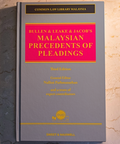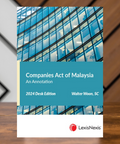![Stamp Act 1949 (Act 378) & Selected Rules [As At 20th April 2025]](http://www.joshualegalartgallery.com/cdn/shop/files/2_3.png?v=1749020561&width=480)
![Stamp Act 1949 (Act 378) & Selected Rules [As At 20th April 2025]](http://www.joshualegalartgallery.com/cdn/shop/files/3_3.png?v=1749020561&width=480)
![Stamp Act 1949 (Act 378) & Selected Rules [As At 20th April 2025]](http://www.joshualegalartgallery.com/cdn/shop/files/4_3.png?v=1749020561&width=480)
![Stamp Act 1949 (Act 378) & Selected Rules [As At 20th April 2025]](http://www.joshualegalartgallery.com/cdn/shop/files/cup_564d8bc8-03b2-41a8-8fb4-60e65d68edaa.jpg?v=1749020561&width=480)
![Stamp Act 1949 (Act 378) & Selected Rules [As At 20th April 2025]](http://www.joshualegalartgallery.com/cdn/shop/products/Arlidge_Eady_SmithonContempt_2_1d872662-1a86-4011-a322-17184838dc4f.jpg?v=1749020561&width=480)
Stamp Act 1949 (Act 378) & Selected Rules [As At 20th April 2025]
Stamp Act 1949 (Act 378)
Selected Rules
[As At 20th April 2025]
An Act relating to stamp duties.
Detailed Contents of Stamp Act 1949 (Act 378):
Malaysian law governs the usage of stamps and stamp charges under the Stamp Act 1949 (Act 378). The Stamp Act 1949 (Act 378) & Selected Regulations [As At 20th April 2025] is the most current revision to the 1949 original, which has undergone a number of changes since then. The act's main clauses and its chosen rules will be covered in this article.
Stamp Duty
Stamp duty, a levy imposed on the documents, is a requirement under the Stamp Act for several documents. The type of paper and transaction's value will determine how much stamp duty is due. For instance, the stamp duty on a property sale agreement would be more than on a property leasing agreement.
Stamping of Documents
In accordance with the Stamp Act, some papers must also be stamped before being used or acted upon. A stamp is applied to a document as proof that a stamp duty has been paid by the process of "stamping" a document. A document needs to be stamped in order to be accepted as evidence in court.
Adjudication of Instruments
The Stamp Act also allows for the adjudication of some instruments in addition to stamping. The Collector of Stamps examines an instrument during adjudication to ascertain the amount of stamp duty due. This is done to make sure the document is paid for with the exact amount of stamp duty.
Penalties for Non-Compliance
For violations of its rules, the Stamp Act imposes fines. A penalty of up to three times the amount of the duty payable may be assessed for failure to pay the requisite stamp duty or to stamp a document. Moreover, documents that have been incorrectly stamped or judged might not be allowed to be used as evidence in court.
Selected Rules
A selection of rules that are added to the Stamp Act to provide more clarification on its provisions. The following are some of the most important guidelines:
Rule 3 - The instruments that are liable to stamp duty are listed in this rule. They consist of contracts, sureties, deeds, leases, and mortgages.
Rule 4 - This rule outlines the rates of stamp duty that are applicable to different kinds of instruments.
Rule 6 - According to this rule, some documents must be stamped 30 days after they are executed or received in Malaysia, whichever comes first.
Rule 10 - According to this regulation, the Stamp Collector will decide on the validity of documents.
Rule 11 - This regulation outlines the processes for contesting the Collector of Stamps' judgement.
Conclusion
An important law in Malaysia that governs the usage of stamps and stamp taxes is the Stamp Act 1949 (Act 378) & Selected Regulations [As At 20th April 2025]. Its requirements are intended to guarantee that the appropriate amount of stamp duty is paid on particular documents and that they are duly stamped or decided. Penalties may apply for failure to adhere to the act's requirements, and papers that are not properly stamped or judged may not be allowed to be used as evidence in court.
Stamp Act 1949 (Act 378) Contains:
Stamp Act 1949 (Act 378)
Stamp Duty (Adhesive Stamp) Rules 2015

Latest releases
Get your copy today!
































